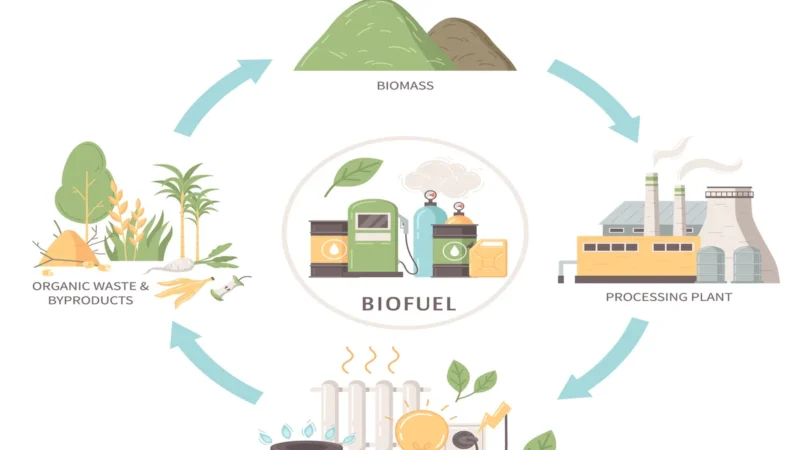Renewable Energy Technologies: Innovative Energy Storage Technologies for a Greener Future

Renewable energy sources, such as solar, wind, and hydropower, offer a promising pathway toward a more sustainable and environmentally friendly future. However, their intermittent nature poses a significant challenge to the reliable and consistent supply of energy. This is where innovative energy storage technologies come into play, revolutionizing the way we capture, store, and distribute renewable energy. In this article, we will explore some of the cutting-edge energy storage solutions that are contributing to a greener and more sustainable future.
1: Need for Innovative Energy Storage Technologies:
Renewable energy technologies have made significant strides in reducing carbon emissions and dependence on fossil fuels. However, the variable nature of these sources requires efficient energy storage solutions to ensure a stable and reliable energy supply. Innovative energy storage technologies address this need by storing excess energy during periods of high generation and releasing it when demand is high or generation is low.
2: Battery Technology Advancements:
Batteries have emerged as a cornerstone of energy storage, enabling the seamless integration of renewable sources into the grid. Advances in battery technology have led to higher energy densities, longer lifetimes, and faster charging capabilities. Lithium-ion batteries, in particular, have seen remarkable improvements, making them a go-to choice for both stationary and portable applications. Furthermore, the development of solid-state batteries holds promise for even safer and more efficient energy storage solutions in the future.
3: Pumped Hydro Storage:
Pumped hydro storage is one of the oldest and most established methods of large-scale energy storage. It involves using excess energy to pump water from a lower reservoir to a higher one, thereby converting electrical energy into gravitational potential energy. When demand rises, the stored water is released back to the lower reservoir, passing through turbines to generate electricity. This technology not only provides energy storage but also contributes to grid stability by responding quickly to fluctuations in demand.
4: Thermal Energy Storage:
Thermal energy storage leverages temperature differences to store and release energy. Sensible heat storage involves heating or cooling a storage medium, such as water or rocks, to store and release thermal energy. Latent heat storage uses phase change materials that absorb or release energy during phase transitions, such as solid to liquid. These technologies find applications in solar power plants, where excess thermal energy can be stored for nighttime or cloudy days, enhancing the overall efficiency of the system.
5: Compressed Air Energy Storage (CAES):
Compressed air energy storage involves using excess electricity to compress air and store it in underground reservoirs. When energy is needed, the compressed air is released and expanded through turbines to generate electricity. Adiabatic CAES involves reheating the compressed air before expansion, while diabatic CAES burns natural gas to provide the necessary heat. This technology offers a unique combination of high storage capacity and relatively low environmental impact.
6.Flywheel Energy Storage:
Flywheel energy storage systems store energy in the form of rotational motion. Excess energy accelerates a heavy rotor to high speeds, storing kinetic energy. When energy is needed, the rotor’s motion is converted back into electricity. Flywheels provide rapid response times and are particularly effective for short-duration energy fluctuations, contributing to grid stability and reliability.
we can conclude this, Innovative energy storage technologies play a vital role in realizing a greener and more sustainable future powered by renewable energy sources. From advanced battery technologies to time-tested methods like pumped hydro storage, these solutions address the intermittency challenges and contribute to energy sustainability and grid stability. As research and development continue, these technologies will further evolve, enabling a seamless transition toward a cleaner and more resilient energy landscape.
FAQs
1.What are renewable energy storage technologies, and why are they important?
Renewable energy storage technologies are advanced systems that capture, store, and release energy generated from renewable sources like solar, wind, and hydropower. They are essential because renewable energy production can be intermittent, and these technologies ensure a consistent energy supply by storing excess energy during periods of high production and releasing it when needed. This stability helps create a reliable and sustainable energy grid.
2.How do battery technologies contribute to renewable energy storage?
Batteries play a crucial role in renewable energy storage by efficiently storing electricity for later use. They have evolved significantly, offering higher energy densities and longer lifetimes. Lithium-ion batteries, for instance, are widely used due to their compact size and fast-charging capabilities. These batteries allow households and businesses to store excess solar energy during sunny periods and use it when the sun isn’t shining.
3.What is pumped hydro storage, and how does it work?
Pumped hydro storage is a well-established technology that stores energy by using gravitational potential energy. It involves pumping water from a lower reservoir to a higher one when there’s excess energy, and releasing it back to the lower reservoir through turbines to generate electricity when demand is high. This process efficiently converts electrical energy into stored water potential energy and vice versa, contributing to grid stability and energy balance.
4.How does thermal energy storage enhance renewable energy systems?
Thermal energy storage employs temperature differences to store and release energy. Sensible heat storage involves heating or cooling a medium, while latent heat storage utilizes phase change materials. In solar power plants, excess thermal energy can be stored during sunny periods and used later when there’s limited sunlight or high demand. This technology improves the overall efficiency and reliability of renewable energy systems.
5.What is compressed air energy storage (CAES), and how does it benefit the grid?
Compressed air energy storage utilizes excess electricity to compress air and store it in underground reservoirs. When energy is required, the compressed air is released and expanded through turbines to generate electricity. This technology helps balance supply and demand on the grid, providing a quick response to fluctuations. It contributes to grid stability and can be a valuable asset in managing renewable energy integration.


